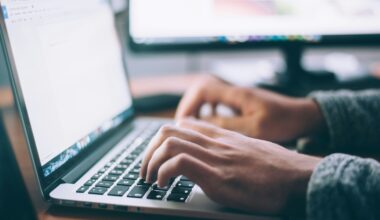Markets have been off to a hot start to the year and are up over 11% through the end of April. In fact, this may be the best start to a presidential term since the days of Franklin D. Roosevelt after the Great Depression. Much of that has been driven by the optimism of a reopening economy, businesses bouncing back strongly, and earnings beating expectations. Earlier this month JPMorgan CEO, Jamie Dimon, noted in his annual letter that the U.S. economy will likely see a boom driven by excess savings, new stimulus measures, accommodative Fed Policy, a new infrastructure bill, and optimism around the end of the pandemic. All these factors build-up to what he called a potential Goldilocks economy moment with fast and sustained growth accompanied by gradually rising inflation and interest rates. As a result, all 11 sectors of the S&P 500 are in positive territory for the year with some of the more recently beat-up industries like Energy (+30%) and Financials (+22.7%) leading the way (as of 4/30).
Federal Reserve Weighs In
Last Wednesday the Federal Reserve added to the positive news by announcing its decision to keep interest rates near zero for the time being as it buys at least $120 billion of bonds each month. This was widely expected as the country is still battling through the pandemic, but it at least removes some of the uncertainty that investors have that could derail the recovery. Inflation has been starting to tick up in the last couple months, up from 1.4% in December to 2.6% as of the end of March, but Fed Chairman Jerome Powell reiterated that it is still not the time to taper even if inflation continues to rise. Although the major U.S. indices ended the day fractionally lower, there was an initial spike higher following the news on Wednesday afternoon that has led some to interpret the beginning of a goldilocks economy.
Accomodative monetary policy looks to also be supplemented by expansionary fiscal policy under this administration. President Biden has released ambitious proposals to have the government be a driving force for economic growth. Under his American Families Plan, he outlines roughly $2.3 trillion of infrastructure spending on bridges, roads, and broadband internet. The administration believes that the government can play a vital role in helping with the economic recovery but also necessary to compete with foreign competition like China.
U.S. Bureau of Economy Feedback
Last Thursday the U.S. Bureau of Economic Analysis released highly anticipated preliminary first quarter GDP data. The U.S. economy grew at a 6.4% from in Q1, an acceleration from the 4.3% growth in the fourth quarter of last year. This came in slightly above expectations as economists had been forecasting 6.3% growth. Much of this market rally this year is dependent on strong economic growth for 2021. In fact, many economists are projecting that 2021 could see the highest GDP growth since 1984 when the U.S. economy grew by roughly 7.2%.
In addition to GDP and inflation, other indicators of the economy have been showing strong positive trends. U.S. consumer confidence reached a 14-month high in April with a reading of 121.7, up from 109.0 in March, and beating economist expectations of 113.0. This is the fourth consecutive rise in the index and the highest level since pre-pandemic back in February 2020. In addition, home prices continue to rise faster than expectations. The latest data released this week showed the S&P CoreLogic Case-Shiller U.S. National Home Price NSA Index, covering all nine U.S. census divisions, reported a 12.0% annual gain in February, up from 11.2% in the previous month. This is the highest recorded gain in 15 years for the index since February 2006.
Potential Headwinds
Although everything seems to be aligning perfectly for another strong year for equities, there are still some headwinds that could derail these markets. Earlier in the month, the broader markets had a notable pullback after President Biden announced details on his new tax plan. The new proposal calls for an increase in the capital gains tax that impacts America’s wealthiest families and individuals. The administration is looking to increase the tax rate to 39.6% from 20% on Americans earning more than $1 million. The revenue generated is expected to help fund education, child care, and other efforts to overhaul the U.S. economy. Investors initially reacted poorly with the S&P 500 immediately selling off more than 1% before recouping some of its losses before the end of the session.
The knee-jerk reaction from the market on any tax increases has always been to sell off. Taxes have always been viewed as a hindrance to economic growth and a deterrent to investments. However, the majority of investors will not be affected by this new tax proposal despite the sharp negative reaction we saw. In fact, UBS published a note indicating that roughly 75% of U.S. investors would not be unaffected by the proposal. Those that are affected could potentially reduce their investments or delay their stock sales under this new proposal, but it is unclear if this will have a big impact on seeing a Goldilocks economy.
In addition to the increase on the capital gains tax, many investors are keeping a close eye on the corporate tax rate. Part of Biden’s new tax plan includes raising the corporate tax rate to 28% and removing incentives for companies to build factories abroad. While Treasury Secretary Janet Yellen announced that this new tax plan would generate an additional $2.5 trillion in revenue over the next 15 years, it is likely to see tough opposition from Republicans. It’s still unclear whether or not the proposed legislation will make it through Congress though some people speculate that the administration may be able to pass some tax reform but at lower rates than previously announced.
Conclusion on the Goldilocks Economy Question
Overall there seem to be a lot of bright spots in the economy that lead to an optimistic outlook for markets. GDP growth is strong and many parts of the economy are starting to look healthy. Monetary and fiscal policy seem to be aligned and working together to continue the economic recovery for the foreseeable future. However, there are still many roadblocks in the way that investors are still cautious about. Although we have vaccines being distributed, this pandemic is far from over with many parts of the country and world still seeing rising COVID-19 cases. The goals set out by the Biden administration are ambitious and could face tough opposition from Republicans. So far investors continue to remain optimistic, however, as we push through the rest of the year.


